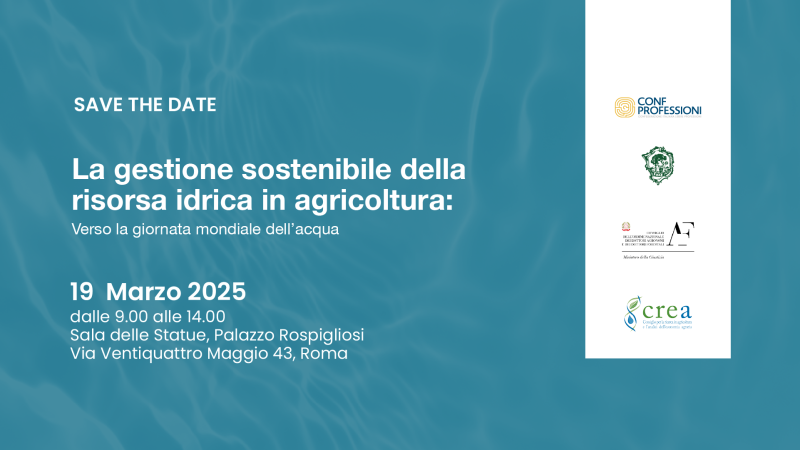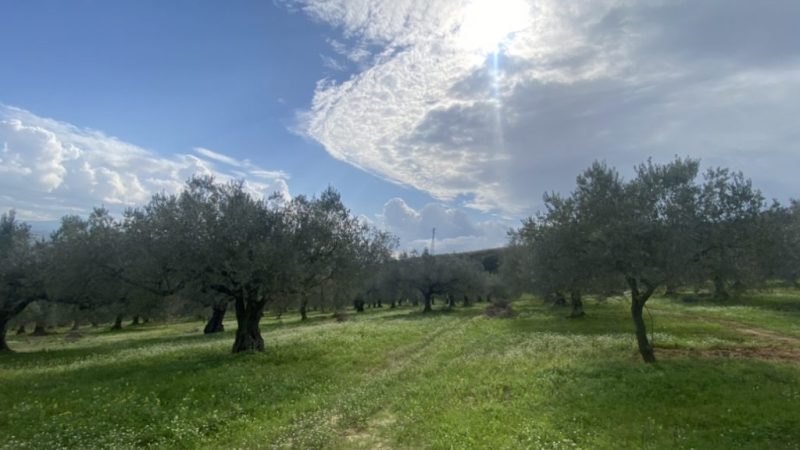In addition, due to the continuous increase of the world population and the marked increase in water demand, mainly in emerging countries, to meet the demand for food over the next three decades, food production will need to rise by 70% (FAO, 2013).
About 26% of agricultural land worldwide is irrigated and ensures 40% of food needs. The arable lands, for different reasons, are reducing over time, then the increase in food production would come from advances in biological and agronomic sciences and expansion in irrigated areas.
The expansion of irrigated areas is however strictly related to the use of non-conventional water resources (brackish water and treated municipal wastewaters) and to the reduction of the current water use per unit of area.
Considering that about 50% of the water used in agriculture is lost in different ways and that the use of non-conventional water resources poses several problems (soil salinization, health risks, pollution, etc.), the reduction of the current water use is an urgent need and the most rational approach, even under an environmental point of view.
Is it possible to reduce the current irrigation water requirements without contracting yields? The answer is affirmative. The reductions are possible by adopting several techniques, combined together, aimed to raise the value of the single components of the overall water use efficiency. These techniques involve hydraulic and agronomic aspects.
Nevertheless the effects of these strategies on the water use efficiency improvement can be evaluated only by monitoring the water volumes delivered in the water network and those actually applied to the crops.
Hydraulic aspects involved in water saving could be summarized as follows: 1) adjustment of water networks to the irrigation requirements of crops actually present in the area, often different from those considered in the design phase, and to the type of water delivery to the users; 2) choice and design of the irrigation methods in relation to the characteristics of the water networks and the type of water delivery to the users; 3) in collective irrigation system, adoption of type of water delivery to the users “to demand” 4) use of apparatus delivery systems based on micro-processors that allow adjusting the water withdrawals and managing more rationally irrigation systems with water delivery type “to demand” (Fig. 1).
Fig1) Hydrant with microprocessor system activated by a circuit board
Agronomic aspects involved in water saving, integrated with hydraulic ones, may concern: 1) definition of irrigation variables (watering volume and irrigation time) in relation to the soil hydraulic characteristics, the physiological and morphological characteristics of the crops, depth and root density, and the irrigation method adopted; 2) during the irrigation season monitoring of the soil moisture in the root layer or in the volume of soil moistened by one or more drippers with drip irrigation, in order to check the validity of the defined irrigation variables; 3) when precision irrigation techniques can not be adopted, adjustment of the irrigation variables to the area characterized by the lowest soil water retention capacity; 4) in collective irrigation systems water pricing on volumetric basis and water delivery to the users “to demand”; 5) optimization of the interaction between irrigation and other production factors (Fig. 2);
Fig.2) Relationships between two different production factors.
6) reduced fertilization, particularly with nitrogen, in order to avoid excessive vegetative growth; 7) adoption of agricultural practices that limit evapotranspiration, such as cultivation under protective devices (greenhouses, tunnels, hail nets), mulching, weed control, application of antitranspirants on hedges and borders; 8) the application of dry farming techniques aimed to contain the irrigation requirements and to fully benefit of rain water, such as supplementary irrigation to crops normally not irrigated, execution of the preparatory main plowing before the rainy season and early planting of spring-summer cycle crop; 9) choice of crops that are best suited to different climatic conditions 10) use of controlled water deficit irrigation techniques (regulated deficit irrigation – RDI-, proportional deficit irrigation -PDI -, partial root-zone drying – PRD -); 11) application of seasonal irrigation volumes of maximum economic convenience; 12) selection and design of irrigation methods in relation to the soil hydraulic characteristics, land topography and crop needs (sensitivity to water stress, depth and root density, etc.).
In conclusion, beyond the hydraulic and agronomic aspects involved to improve water use efficiency, the monitoring of the water volume used for agriculture is the basis of strategies aimed to reduce water use in agriculture
Considering a specific seasonal irrigation volume of 2500 m3/ha, the improvement of only 1% of water use efficiency would result in a water saving of 25 m3/ha. Bearing in mind that there are available and ready to transfer in practice techniques and devices suitable to rise the current average value of efficiency, of about 50%, to values greater than 80%, irrigation requirements could be reduced even more than 30%. With the seasonal volume considered, 2500 m3/ha, it would be saved more than 750 m3/ha of water, sufficient to increase irrigated areas by about 43%.
Such water savings fully justify the need of improving water use efficiency, also because they can significantly contribute to environmental protection.
Fig. 3) Influence of the irrigational method and turn on the industrial production of tomatoes
(Angelo Caliandro, Università di Bari – angcaliandro@gmail.com)
Warsash, Giovanni Costa detto Nino






